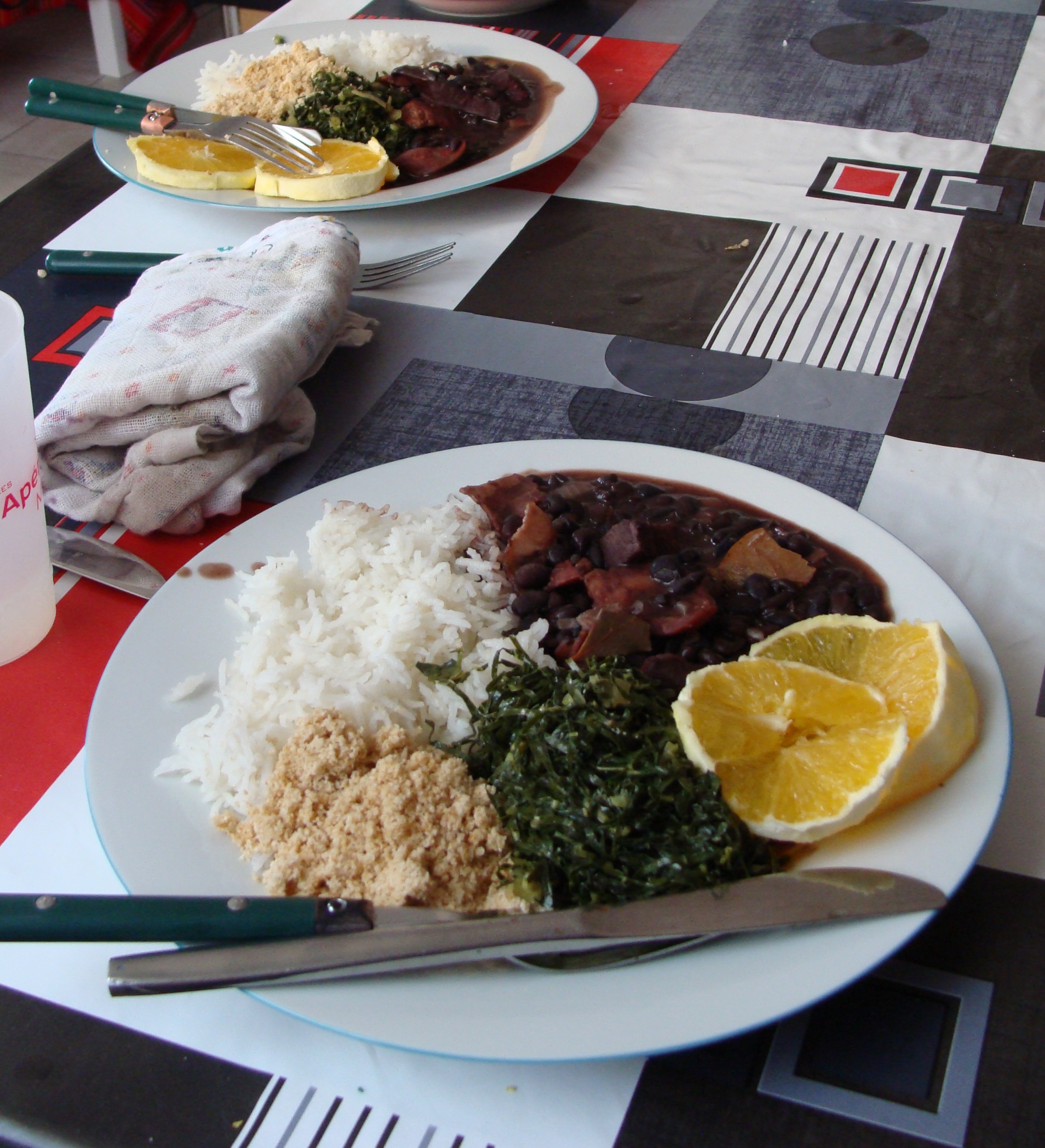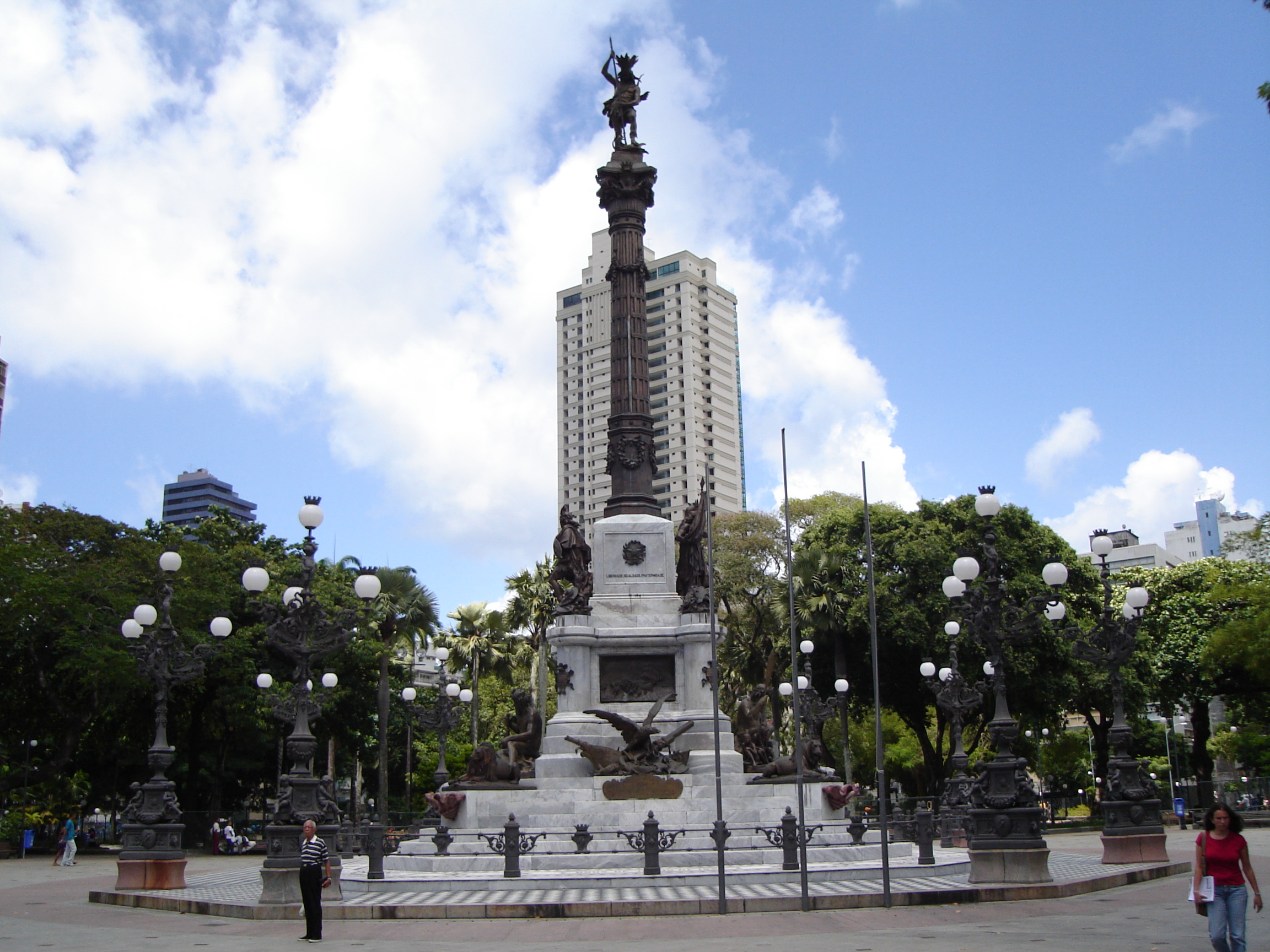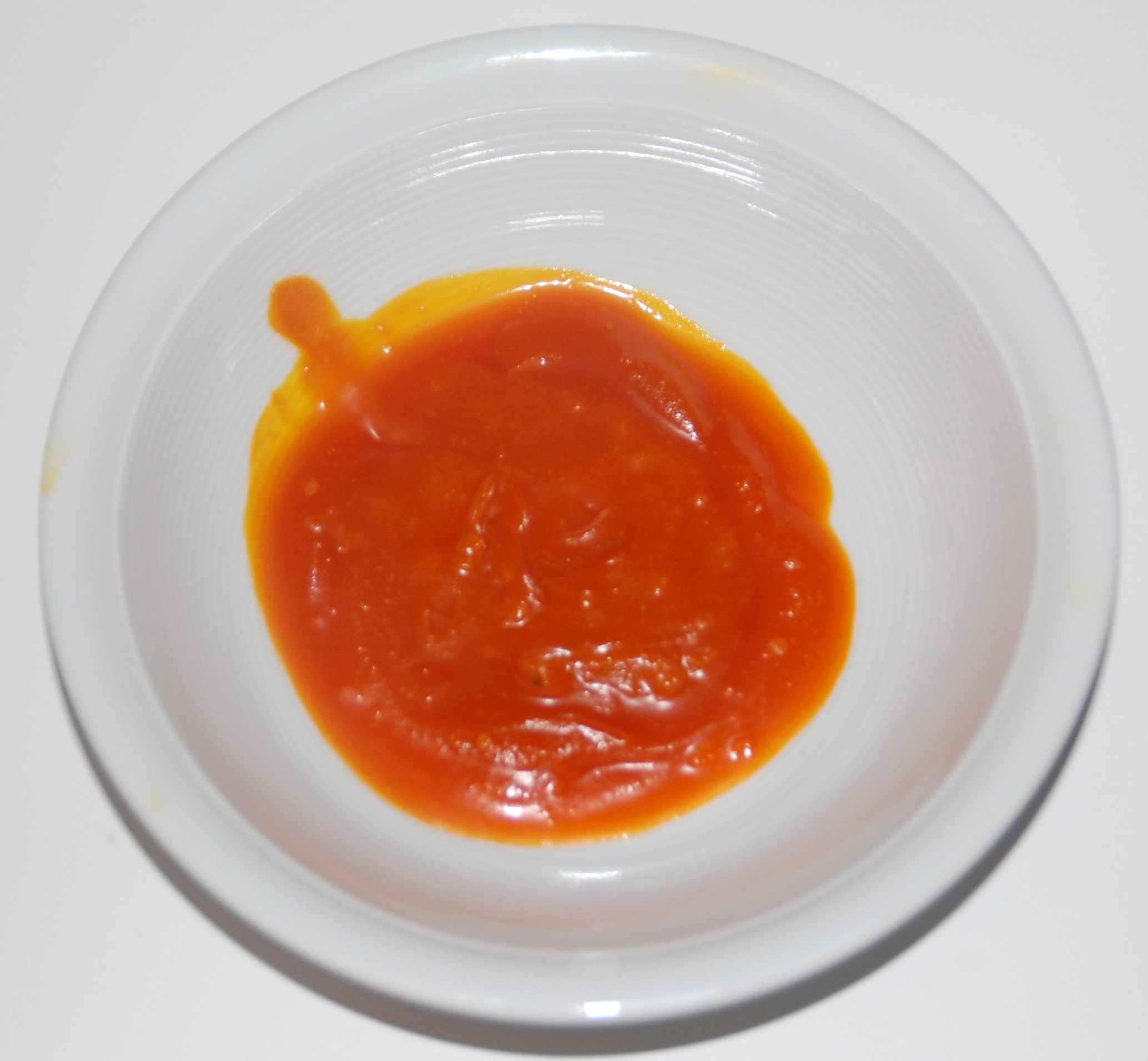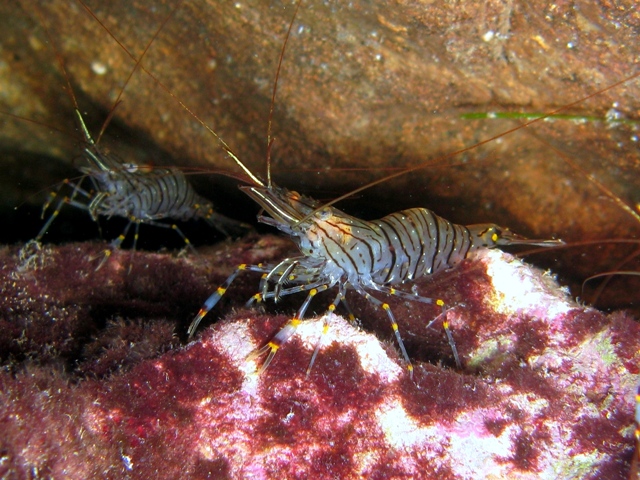|
Acarajé
''Akara'' (; , ) is a type of fritter made from cowpeas or beans (black-eyed peas) by the Yoruba people of Nigeria, Benin and Togo. It is also known as Bean cake. It is found throughout West African, Caribbean, and Brazilian cuisines. The dish is traditionally encountered in Brazil's northeastern state of Bahia, especially in the city of Salvador. The dish was brought by enslaved Yoruba citizens from West Africa, and can still be found in various forms in Nigeria, Benin and Togo. ''Akara'' is made from peeled beans (black-eyed peas), washed and ground with pepper, and other preferred seasonings, then beaten to aerate them, and deep-fried in small balls. Brazilian acarajé is made from raw and milled cowpeas that are seasoned with salt, pepper and chopped onions molded into the shape of a large scone and deep-fried in dendê with a wok-like pan in front of the customers. It is served split in half and stuffed with '' vatapá'' and ''caruru'' – spicy pastes made from shrimp ... [...More Info...] [...Related Items...] OR: [Wikipedia] [Google] [Baidu] |
Brazilian Cuisine
Brazilian cuisine is the set of cooking practices and traditions of Brazil, and is characterized by European cuisine, European, Amerindian, African tribes, African, and Asian (Levantine cuisine, Levantine, Japanese food, Japanese, and most recently, Chinese food, Chinese) influences. It varies greatly by region, reflecting the country's mix of native and immigrant populations, and its continental size as well. This has created a national cuisine marked by the preservation of regional differences. Ingredients first used by native peoples in Brazil include cashews, cassava, ''guaraná'', ''açaí'', ''Dipteryx odorata, cumaru,'' and ''tucupi''. From there, the many waves of immigrants brought some of their typical dishes, replacing missing ingredients with local equivalents. For instance, the European immigrants (primarily from Portuguese Brazilian, Portugal, Italian Brazilian, Italy, Brazilians of Spanish descent, Spain, German Brazilian, Germany, Dutch Brazilian, Netherlands, Po ... [...More Info...] [...Related Items...] OR: [Wikipedia] [Google] [Baidu] |
Vatapá
Vatapá ( Yoruba: vata'pa, ) is an Afro-Brazilian dish made from bread, shrimp, coconut milk, finely ground peanuts and palm oil mashed into a creamy paste. It is a typical food of Salvador, Bahia and it is also common to the North and Northeast regions of Brazil. In the northeastern state of Bahia it is commonly eaten with ''acarajé'', and as a ritual offering in Candomblé, with acaçá or acarajé. Vatapá is often eaten with white rice in other regions of Brazil. The shrimp can be replaced with other ingredients. Etymology "Vatapá" is probably derived from the term Yoruba ''vata'pa''.CUNHA, A. G. ''Dicionário etimológico Nova Fronteira da língua portuguesa''. Rio de Janeiro. Nova Fronteira. p. 812. Origin Vatapá is of African origin and arrived in Brazil through the Yoruba people with the name of ''ehba-tápa''. It is a typical dish of the northeastern cuisine and very traditional in the state of Bahia, where ''dendê'' (unrefined red palm oil Palm oil is an e ... [...More Info...] [...Related Items...] OR: [Wikipedia] [Google] [Baidu] |
Salvador, Bahia
Salvador () is a Municipalities of Brazil, Brazilian municipality and capital city of the Federative units of Brazil, state of Bahia. Situated in the Zona da Mata in the Northeast Region, Brazil, Northeast Region of Brazil, Salvador is recognized throughout the country and internationally for its #Cuisine, cuisine, #Music, music, and #Pelourinho, architecture. The African influence in many cultural aspects of the city makes it a center of Afro-Brazilian culture. As the Capitals of Brazil, first capital of Colonial Brazil, the city is List of oldest continuously inhabited cities, one of the oldest in the Americas. Its foundation in 1549 by Tomé de Sousa took place on account of the implementation of the List of governors-general of Brazil, General Government of Brazil by the Portuguese Empire. Centralization as a capital, along with Portuguese colonization, were important factors in shaping the profile of the municipality, as were certain geographic characteristics. The construct ... [...More Info...] [...Related Items...] OR: [Wikipedia] [Google] [Baidu] |
Brazilian Portuguese
Brazilian Portuguese (; ; also known as pt-BR) is the set of Variety (linguistics), varieties of Portuguese language native to Brazil. It is spoken by almost all of the 203 million inhabitants of Brazil and widely across the Brazilian diaspora, today consisting of about two million Brazilians who have emigrated to other countries. With a population of over 203 million, Brazil is by far the world's largest List of Portuguese speaking countries, Portuguese-speaking nation and the only one in the Americas where Portuguese, of which Brazilian Portuguese is a variety, is the official language under Article 13 of the Constitution. The Academia Brasileira de Letras (ABL) plays a significant cultural role in its development but has no legal regulatory authority over the language, which is shaped primarily by usage and educational norms in Brazil. Brazilian Portuguese differs notably from European Portuguese in phonetics, vocabulary, and grammar, though it remains a variety of Portuguese ... [...More Info...] [...Related Items...] OR: [Wikipedia] [Google] [Baidu] |
Black-eyed Peas
The black-eyed pea or black-eyed bean is a legume grown around the world for its medium-sized, edible bean. It is a subspecies of the cowpea, an Old World plant domesticated in Africa, and is sometimes simply called a cowpea. The common commercial variety is called the California Blackeye; it is pale-colored with a prominent black spot. The American South has countless varieties, many of them heirloom, that vary in size from the small lady peas to very large ones. The color of the eye may be black, brown, red, pink, or green. All the peas are green when freshly shelled and brown or buff when dried. A popular variation of the black-eyed pea is the purple hull pea or mud-in-your-eye pea; it is usually green with a prominent purple or pink spot. The currently accepted botanical name for the black-eyed pea is '' Vigna unguiculata'' subsp. ''unguiculata'', although previously it was classified in the genus '' Phaseolus''. ''Vigna unguiculata'' subsp. ''dekindtiana'' is the wild ... [...More Info...] [...Related Items...] OR: [Wikipedia] [Google] [Baidu] |
Brazil
Brazil, officially the Federative Republic of Brazil, is the largest country in South America. It is the world's List of countries and dependencies by area, fifth-largest country by area and the List of countries and dependencies by population, seventh-largest by population, with over 212 million people. The country is a federation composed of 26 Federative units of Brazil, states and a Federal District (Brazil), Federal District, which hosts the capital, Brasília. List of cities in Brazil by population, Its most populous city is São Paulo, followed by Rio de Janeiro. Brazil has the most Portuguese-speaking countries, Portuguese speakers in the world and is the only country in the Americas where Portuguese language, Portuguese is an Portuguese-speaking world, official language. Bounded by the Atlantic Ocean on the east, Brazil has a Coastline of Brazil, coastline of . Covering roughly half of South America's land area, it Borders of Brazil, borders all other countries and ter ... [...More Info...] [...Related Items...] OR: [Wikipedia] [Google] [Baidu] |
Caruru (food)
Caruru () is a Brazilian food made from okra, onion, shrimp, palm oil and toasted nuts (peanuts and/or cashews). It is a typical condiment in the northeastern state of Bahia, where it is commonly eaten with ''acarajé'', an Afro-Brazilian street food made from mashed black-eyed peas formed into a ball and then deep-fried in palm oil.''"Caruru, o prato afro-indígena mais antigo e popular"'' - por Guta Chaves, para a Revista História Viva, nº 20, pg. 15. Editora Duetto (junho 2005)FERREIRA, A. B. H. ''Novo dicionário da língua portuguesa''. 2ª edição. Rio de Janeiro. Nova Fronteira. 1986. p. 361. Etymology ''Caruru'' possibly comes from the African term ''kalalu''. Another possibility is that it is a Tupi noun, ''ka'á-riru'' (lit.: "eating herb"), as defined by the Brazilian folklorist Luís da Câmara Cascudo. It is a curious case of similar words, which generates some confusion between the plant and the dish. Origin Guilherme Piso, who lived in Pernambuco (1638–1644), ... [...More Info...] [...Related Items...] OR: [Wikipedia] [Google] [Baidu] |
West Africa
West Africa, also known as Western Africa, is the westernmost region of Africa. The United Nations geoscheme for Africa#Western Africa, United Nations defines Western Africa as the 16 countries of Benin, Burkina Faso, Cape Verde, The Gambia, Ghana, Guinea, Guinea-Bissau, Ivory Coast, Liberia, Mali, Mauritania, Niger, Nigeria, Senegal, Sierra Leone, and Togo, as well as Saint Helena, Ascension and Tristan da Cunha (United Kingdom Overseas Territories, United Kingdom Overseas Territory).Paul R. Masson, Catherine Anne Pattillo, "Monetary union in West Africa (ECOWAS): is it desirable and how could it be achieved?" (Introduction). International Monetary Fund, 2001. The population of West Africa is estimated at around million people as of , and at 381,981,000 as of 2017, of which 189,672,000 were female and 192,309,000 male.United Nations Department of Economic and Social Affairs, Population Division (2017). World Population Prospects: The 2017 Revision, custom data acquired via webs ... [...More Info...] [...Related Items...] OR: [Wikipedia] [Google] [Baidu] |
Deep Frying
Deep frying (also referred to as deep fat frying) is a cooking method in which food is submerged in hot fat, traditionally lard but today most commonly Cooking oil, oil, as opposed to the shallow frying used in conventional frying done in a frying pan. Normally, a deep fryer or chip pan is used for this; industrially, a pressure fryer or vacuum fryer may be used. Deep frying may also be performed using oil that is heated in a pot. Deep frying is classified as a hot-fat cooking method. Typically, deep frying foods cook quickly since oil has a high rate of heat conduction and all sides of the food are cooked simultaneously. The term "deep frying" and many modern deep-fried foods were not invented until the 19th century, but the practice has been around for millennia. Early records and cookbooks suggest that the practice began in certain European countries before other countries adopted the practice. Deep frying is popular worldwide, with deep-fried foods accounting for a large por ... [...More Info...] [...Related Items...] OR: [Wikipedia] [Google] [Baidu] |
Palm Oil
Palm oil is an edible vegetable oil derived from the mesocarp (reddish pulp) of the fruit of oil palms. The oil is used in food manufacturing, in beauty products, and as biofuel. Palm oil accounted for about 36% of global oils produced from oil crops in 2014. Palm oils are easier to stabilize and maintain quality of flavor and consistency in ultra-processed foods, so they are frequently favored by food manufacturers. Globally, humans consumed an average of of palm oil per person in 2015. Demand has also increased for other uses, such as cosmetics and biofuels, encouraging the growth of palm oil plantations in tropical countries. The mass production of palm oil in the tropics has attracted the concern of environmental and human rights groups. The palm oil industry is a significant contributor to deforestation in the tropics where palms are grown and has been cited as a factor in social problems due to allegations of human rights violations among growers. In 2018, a repor ... [...More Info...] [...Related Items...] OR: [Wikipedia] [Google] [Baidu] |
Shrimp
A shrimp (: shrimp (American English, US) or shrimps (British English, UK)) is a crustacean with an elongated body and a primarily Aquatic locomotion, swimming mode of locomotion – typically Decapods belonging to the Caridea or Dendrobranchiata, although some Shrimp#Non-decapods, crustaceans outside of this order are also referred to as "shrimp". Any small crustacean may also be referred to as "shrimp", regardless of resemblance. More narrow definitions may be restricted to Caridea, to smaller species of either of the aforementioned groups, or only the Marine life, marine species. Under a broader definition, ''shrimp'' may be synonymous with prawn, covering stalk-eyed swimming crustaceans with long, narrow muscular tails (Abdomen#Arthropoda, abdomens), long whiskers (Antenna (biology), antennae), and slender, Biramous, biramous legs. They swim forward by paddling the swimmerets on the underside of their abdomens, although their escape response is typically repeated flicks wit ... [...More Info...] [...Related Items...] OR: [Wikipedia] [Google] [Baidu] |
Cashew
Cashew is the common name of a tropical evergreen tree ''Anacardium occidentale'', in the family Anacardiaceae. It is native to South America and is the source of the cashew nut and the cashew apple, an accessory fruit. The tree can grow as tall as , but the dwarf cultivars, growing up to , prove more profitable, with earlier maturity and greater yields. The cashew nut is edible and is eaten on its own as a snack, used in recipes, or processed into cashew cheese or cashew butter. The nut is often simply called a 'cashew'. The cashew apple is a light reddish to yellow fruit, whose pulp and juice can be processed into a sweet, astringent fruit drink or fermented and distilled into liquor. In 2023, 3.9 million tons of cashew nuts were harvested globally, led by the Ivory Coast and India. In addition to the nut and fruit, the shell yields derivatives used in lubricants, waterproofing, and paints. Description The cashew tree is large and evergreen, growing to tall, with a s ... [...More Info...] [...Related Items...] OR: [Wikipedia] [Google] [Baidu] |






